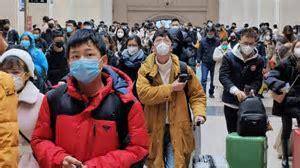Coronavirus: Asymptomatic cases carry same amount of virus

People with symptomless Covid-19 can carry as much of the virus as those with symptoms, a South Korean study has suggested.
South Korea was able to identify and isolate asymptomatic cases through mass testing as early as the start of March.
There is mounting evidence these cases represent a considerable proportion of coronavirus infections.
But the researchers weren't able to say how much these people actually passed the virus on.
People with a positive coronavirus test were monitored in a community treatment centre, allowing scientists to look at how much of the virus was detectable in their nose and throat swabs.
They were given regular tests, and only released once they were negative.
Results of 1,886 tests suggest people with no symptoms at the time of the test, including those who never go on to develop symptoms, have the same amount of viral material in their nose and throat as people with symptoms.
The study also showed the virus could be detected in asymptomatic people for significant periods of time - although they appeared to clear it from their systems slightly faster than people with symptoms.
The median time (the number where half of cases were higher and half were lower) from being diagnosed to receiving a negative test was 17 days in asymptomatic patients and 19.5 days in symptomatic patients.
Because of the nature of the isolation centre, the study didn't include people with severe cases of the disease. They were also younger and healthier than average.
Most coronavirus testing focuses on people with symptoms, so there is little data on asymptomatic cases.
This study gives us some more information about what they look like in the body.
The researchers acknowledge their study could not "determine the role" that the presence of the virus in asymptomatic patients played in transmission, however.
In theory, having the same amount of virus in your nose and throat means you have just as much to pass on.
But people without symptoms are less likely to have a hacking cough that will send infected droplets further into the air.
There is "as much virus in their respiratory mucus as someone who has the disease", says Dr Simon Clarke, a cellular microbiologist at the University of Reading.
But, he added, "that doesn't mean they're spraying as much into the environment".
While there was still a risk from people without symptoms, someone with symptoms who was "coughing and spraying out the virus" was likely to be a higher risk, he said.
The risks of catching coronavirus from anyone depended on a number of factors, said infection biologist Dr Andrew Preston from the University of Bath.
That included how deeply and quickly the infected person was breathing, how close you were to them for how long, and whether or not you were in a closed environment, he added.
